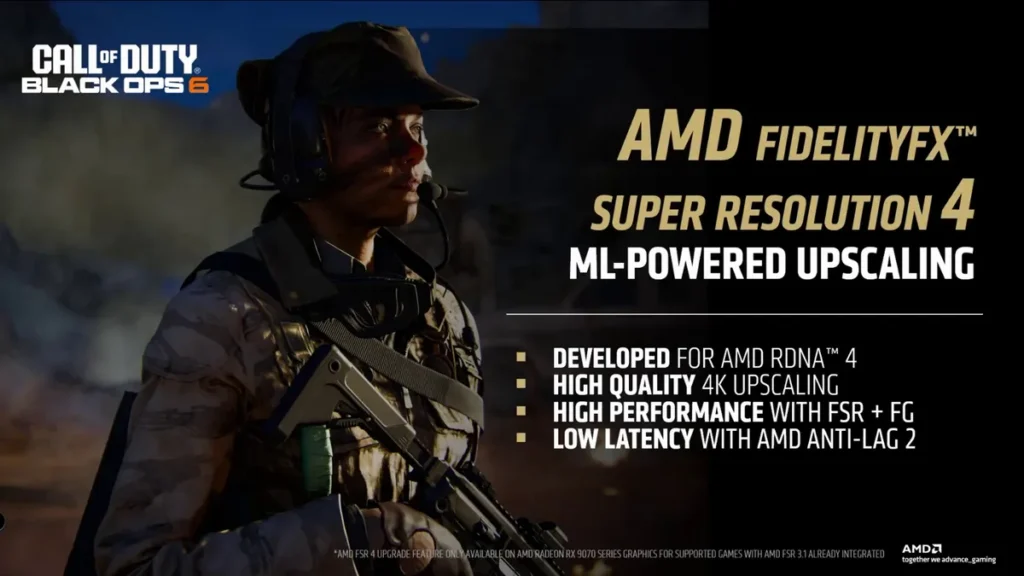If you haven't yet, follow us on X (Twitter), Mastodon, or Bluesky to know when we post new articles, and join our Reddit or Subscribe to us on YouTube to check out our content and interact with our awesome community. Thank you for supporting us!
The Steam Deck has reinvigorated my passion for gaming, and I can't wait to see how Valve is going to iterate on their amazing portable device. However, it may take a little longer for us to find out what a Steam Deck 2 will be like since Valve has specifically stated that they will not be using the newly announced Z2 chips for the Deck. I have seen mixed reactions to this, with a lot of people wanting a more powerful Deck and hoping Z2 would make its way over, but this decision from Valve could actually make the Steam Deck 2 significantly better while sticking to Valve's generational leap commitment.

At AMD's CES 2025 keynote, they announced a ton of great new products and software, but one specifically stood out to me more than the Z2-series APUs, and that is FSR 4. FSR, or FidelityFX Super Resolution, is AMD's upscaling technology that they use to compete with NVIDIA's DLSS and Intel's XeSS. The tech allows games to render at a lower resolution and upscale them to a higher one, making the image appear sharper while giving some performance boosts. FSR is especially helpful on the Steam Deck, as it can help games run better without sacrificing a ton of visual quality.
FSR 4 seems to be a huge leap forward for the upscaling technology, starting to integrate machine learning to increase performance and quality. This is similar to NVIDIA's DLSS upscaling, which also uses machine learning with some impressive results. However, unlike the previous versions of FSR tech, it will require specific hardware to fully utilize it, specifically their new RDNA 4 GPU cores. So currently, only those with a newly announced dedicated AMD GPU RX 9070 or 9070 XT will be able to use it.

So why is this good for the next-generation Steam Deck, you ask? Well, it means that the APU that the Steam Deck 2 may use is skipping the RDNA 3/RDNA 3.5 generation, meaning it could skip right to using RDNA 4 cores. If this is the case, we could utilize FSR 4 on the next Steam Deck, which will provide massive boosts to performance and visual quality (if the claims from AMD are founded). This could make bigger games that utilize FSR 4 perform much better on the deck, and I wouldn't be surprised if some of the biggest AAA games that were released didn't use it.
It also appears that any game with FSR 3.1 support should automatically be able to support FSR 4. This could already mean tons of huge games that are out now, like Horizon Zero Dawn Remastered, God of War Ragnarok, Final Fantasy 16, Ratchet and Clank: Rift Apart, Remnant 2, S.T.A.L.K.E.R. 2, and more should all be automatically supported.

However, this is all speculative. Valve will most likely make a custom APU for the Deck, and it's possible they will re-use RDNA 3 or RDNA 3.5 GPU cores, and there may be some other component necessary for FSR 4 to work that won't be possible in an APU designed for mobile devices. I am feeling more optimistic about this, though. There would be huge benefits if the Steam Deck 2 could utilize FSR 4, and it would constitute a huge generational leap from the RDNA 2 cores the Deck currently uses.
I hope that this is what Valve does, and it would absolutely justify a second device if it could utilize this technology. I think we will see later this year exactly what Valve is planning to do, but until then, I can dream.
If you enjoyed this article, check out the rest of the content on SteamDeckHQ! We have a wide variety of game reviews and news that will help your gaming experience. Whether you're looking for news, tips and tutorials, game settings and reviews, or just want to stay up-to-date on the latest trends, we've got you covered!









To be fair, J always figured we were at least 2 years away from a significant revision of the Steam Deck by Valve. They said last year they were waiting for s generational leap in hardware which makes sense because at the moment while sure you might get a few more frames, between cost, power and energy efficiency we've still a wait ahead.
What I WAS expecting was a non-Valve OEM handheld with native Steam OS support, which seems to be the case with the Legion Go S. Personally rhough, I think the Deck has better ergonomics, people seriously underrate the haptic trackpads and the back grip buttons, not to mention gyro (even if THAT usnt my thing)
The next steam deck has to be low to mid PS5 level performance
With FSR 4 in tow, I could definitely see it. It's going to be interesting to see what they do.
The current iteration of the Steam Deck has a custom APU, or at least the GPU part is custom, so I never assumed that Valve would use a standard chipset for the next iteration either. They probably want to prioritize efficiency over raw power, like they currently do.
The Aerith/Sephirot chip aren't really custom chips made from Valve, since they reused a chip made for another kind of product (advertisement IIRC) with a laser cut part which Valve doesn't need.
This is basically the same approach AMD had with all Z-series chip which, Z2 Go aside, are based on silicon made for other for factors.
In any case, I don't think Valve will make a Steam Deck 2 anytime soon, altough I think that they will probably have this time a real custom chip made for them, probably based on 6 Zen 5c cores and 12 RDNA 4 CU to support FSR4 while bumping massively the speed. And I also think that Valve might ackknowledge the fact that many people use the Deck at home on the couch or docked and could probably increased the Power target to 25/30W.